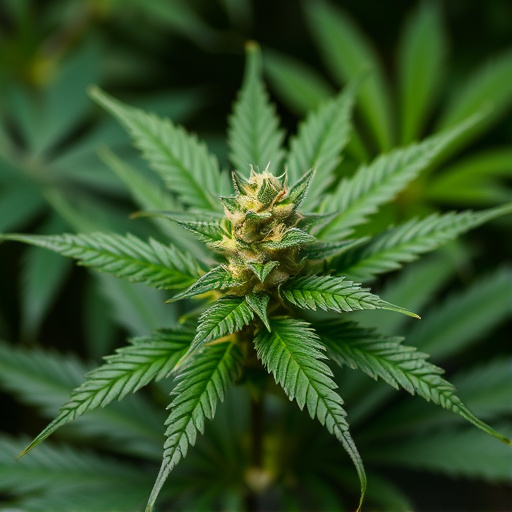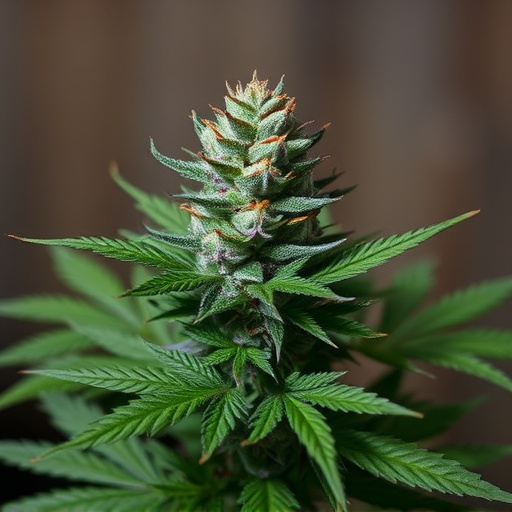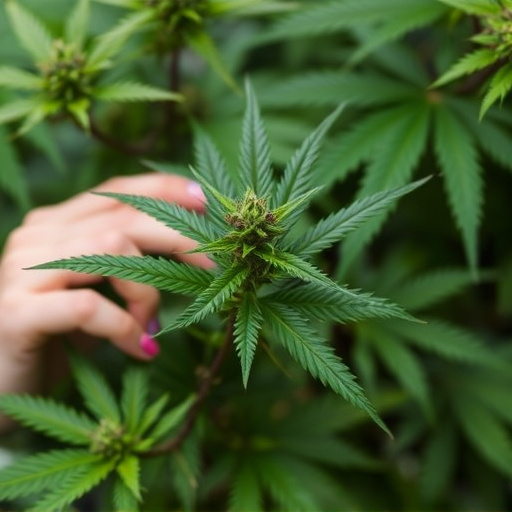Cannabis offers hope for chronic pain and migraine sufferers, with specific strains high in CBD and low in THC showing effectiveness. Popular choices like Granddaddy Purple and Blue Dream alleviate pain without drowsiness. Starting with low doses and consulting healthcare professionals is crucial for personalized treatment, considering individual tolerances and strain specifics. Safe practices include buying from reputable sources and storing cannabis properly to avoid interactions with other medications.
Discover the potential of cannabis as a natural migraine relief option with our comprehensive guide. Understanding cannabis and its effect on migraines starts with knowing the basics: what it is and how it interacts with your body’s endocannabinoid system. We’ll explore specific cannabis strains renowned for their ability to alleviate migraine pain, offering insights into their unique compositions. Additionally, we provide essential safe usage practices to ensure responsible and effective treatment without risks.
- Understanding Cannabis and Migraines: The Basics
- Choosing the Right Cannabis Strains for Migraine Relief
- Safe Usage Practices to Consider Before Starting
Understanding Cannabis and Migraines: The Basics

Cannabis has gained attention as a potential treatment for various conditions, including chronic pain and migraines. It’s essential to understand that cannabis is not a one-size-fits-all solution, and its effects can vary greatly depending on the strain, dosage, and individual tolerance. Different cannabis strains offer distinct profiles of cannabinoids like THC (tetrahydrocannabinol) and CBD (cannabidiol), which interact with your body’s endocannabinoid system to alleviate symptoms.
For migraines, specific cannabis strains known for their high CBD content or balanced THC-to-CBD ratios are often recommended. CBD itself is non-intoxicating but may help reduce inflammation and nerve sensitivity associated with migraines. Certain strains like Granddaddy Purple, Blue Dream, and ACDC are popular choices due to their reported ability to provide pain relief without causing excessive drowsiness. However, it’s crucial to start with low doses and gradually increase as needed under professional guidance.
Choosing the Right Cannabis Strains for Migraine Relief

When considering cannabis as a treatment option for migraines, it’s crucial to choose the right strain. Different cannabis strains have distinct chemical profiles, with THC and CBD being the most well-known cannabinoids. For migraine relief, many patients find that strains high in CBD and low in THC are most effective. CBD is known for its potential anti-inflammatory and pain-relieving properties, making it a popular choice for managing headaches.
Specific cannabis strains for migraines often include those with high levels of terpene profiles like linalool and myrcene, which have been linked to calming effects and reducing inflammation. Some popular options include Indica or hybrid strains known for their relaxing properties, such as Granddaddy Purple, Blue Dream, or Charlotte’s Web, the latter being renowned for its high CBD content. It’s important to start with low doses and gradually increase to find the right balance that provides relief without causing adverse effects.
Safe Usage Practices to Consider Before Starting

Before starting with cannabis, it’s crucial to adopt safe usage practices, especially if you’re considering cannabis strains for migraines or other medical conditions. One essential practice is understanding your dosage; starting low and slow allows your body to tolerate cannabis safely. Different strains have varying levels of THC (the primary psychoactive compound) and CBD (a non-intoxicating compound with potential therapeutic benefits), so choosing the right strain for your needs is key. For migraines, indica or hybrid strains with higher CBD content might offer relief without the intense mental alteration associated with high-THC products.
Another critical aspect is knowing your source; buying from reputable dispensaries ensures you get a product that meets quality and safety standards. Proper storage of cannabis is also vital; keep it in a secure, cool, dark place to maintain its potency and efficacy. Lastly, be mindful of potential interactions with other medications or supplements you might take, as cannabis can affect the metabolism of certain drugs. Always consult healthcare professionals for personalized advice when incorporating cannabis into your wellness routine.
Starting with cannabis for migraine relief can be a game-changer, but it’s crucial to approach it safely. By understanding your condition, selecting suitable cannabis strains, and adopting responsible usage practices, you can navigate this alternative treatment option confidently. Remember, while cannabis may provide benefits, it’s essential to consult healthcare professionals for personalized advice and guidance on dosage and strain choices tailored to your specific needs.














